2. Recognizing heritage places of worship in your community
In the Ontario Heritage Tool Kit
Details about the designation processes described in this section can be found in:
The act of commemorating, recognizing and protecting heritage places of worship provides a public demonstration of what a community values. These activities promote awareness in the community and beyond and help ensure change is appropriate to the unique circumstances of the heritage place of worship.
Commemoration, recognition and protection can be initiated by the municipality or the property owner and can be achieved through a variety of tools. Municipalities should work in collaboration with owners of heritage places of worship to determine the most appropriate tools to use.
Many of the tools outlined in this section can be used in combination to tailor commemoration, recognition and protection to individual circumstances of a heritage place of worship.
2.1. Good stewardship and promotion
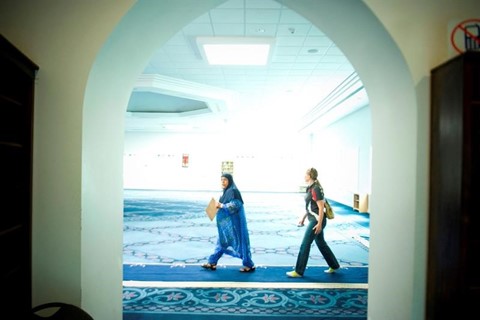
Good stewardship and promotion of a heritage place of worship is often informally fostered by religious organizations, members of a congregation or a friends group who voluntarily undertake to commemorate and conserve it without any legal protection mechanism. This may be as simple as developing a brochure or a website. More formally, the governing authority of the place of worship may develop manuals or guidelines for property care.
Capital improvements and restorations are often supported through fundraising campaigns. Donors of building features (for example, stained glass window) may provide endowments with terms that stipulate how they are to be cared for.
Heritage places of worship across Ontario may also be promoted through publicity and interpretive events such as Doors Open Ontario, Ontario Heritage Week activities, local tourism initiatives, walking tours and similar events that build awareness of a community’s cultural heritage resources.
2.2. Commemoration and recognition
Public recognition of a heritage place of worship acknowledges and builds awareness of its history and cultural heritage value or interest. Many organizations interested in local, provincial, or national history, including local historical societies and municipal heritage committees, recognize cultural heritage resources with formal plaques or markers. Forms of recognition such as plaques do not in themselves provide legal protection.
Most levels of government have programs to recognize important heritage sites through commemorative plaques.
The federal government commemorates National Historic Sites through plaques installed by the Historic Sites and Monuments Board of Canada.
The nominated subject must have historical significance from a national perspective, not only from a local or regional standpoint. Examples of heritage places of worship in Ontario commemorated as National Historic Sites include, for example:
- Notre Dame Roman Catholic Basilica National Historic Site in Ottawa
- St. Paul’s Presbyterian Church/Former St. Andrew’s Church National Historic Site in Hamilton
- Nazrey African Methodist Episcopal in Amherstburg
The Ontario Heritage Trust (the Trust) operates the Ontario government’s plaque program for properties of provincial significance. These familiar blue and gold plaques enliven Ontario’s heritage by sharing stories of the people, places and events that have helped to shape the province. Applications for plaques come from communities. For more information visit the Trust’s plaque website.
Many municipalities have established their own plaque programs to identify and recognize designated properties or other properties of cultural heritage value or interest to the community.
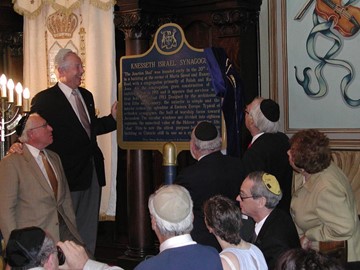
Doors Open Ontario
Doors Open Ontario is a free annual cultural heritage tourism program led by the Ontario Heritage Trust since 2002. The program:
- encourages Ontarians to discover the stories inside the province’s most unique and fascinating historic places, cultural, and natural sites — all free of charge
- celebrates community identity and drives tourism in communities of all sizes across Ontario
- builds networks and capacity to create partnerships among arts, culture, heritage and tourism organizations, community business associations, municipalities, and the Trust
Doors Open Ontario provides opportunities to showcase heritage places of worship, draw attention to conservation efforts and engage the community.

The Ontario Building Code
Part 11 of the Code provides compliance alternatives where compliance with the standard requirements under the Code is not viable because “it is detrimental to the preservation of a heritage building”.
Also, where an existing building is subject to alteration or repair, the Code will apply only to those parts of the building being altered or repaired. The entire building is not required to be brought into compliance with modern standards.
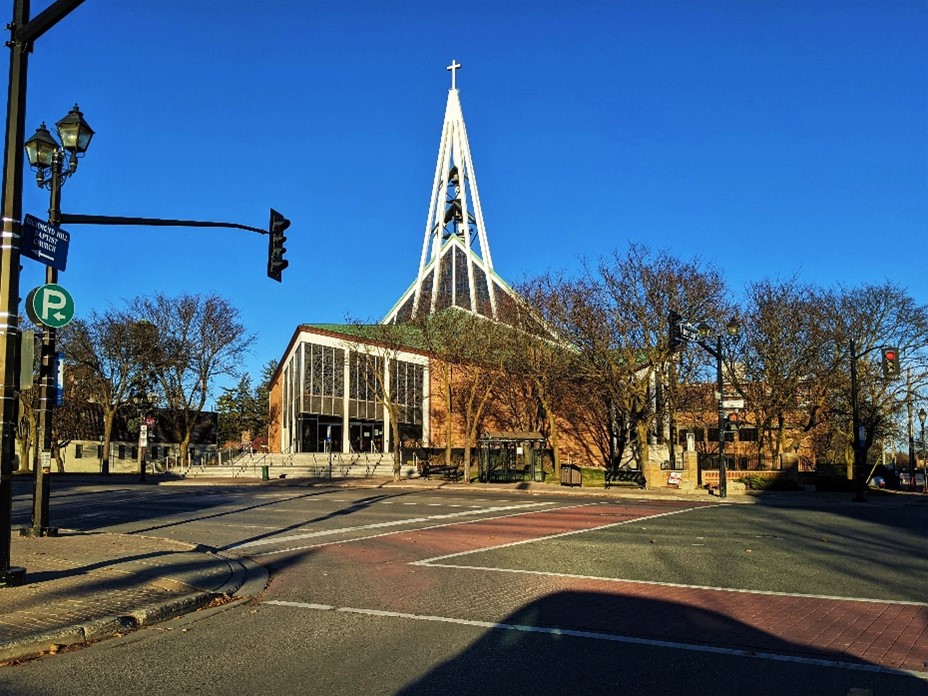
2.3. Listing on a municipal register
Listing on a municipal register publicly recognizes a property’s cultural heritage value or interest and flags it for consideration in the municipal planning process. In addition, listing provides temporary protection for non-designated properties. The Ontario Heritage Act stipulates that owners of a listed property shall not demolish or remove a building or structure on the property or permit the demolition or removal of the building or structure unless they give the council of the municipality at least 60 days notice in writing of their intention to do so. Municipalities may also have their own policies about information needed to support the notice to demolish or remove (for example, heritage impact assessment). There are various rules that apply to listed properties. For more information about the municipal register and how it works refer to the Heritage Property Evaluation and Designating Heritage Properties guides.
2.4. Designation of individual properties
Part IV of the Ontario Heritage Act enables municipal councils to pass bylaws to formally designate individual properties of cultural heritage value or interest. For more detailed information on designating individual heritage properties see the Designating Heritage Properties guide in the Ontario Heritage Tool Kit.
Heritage designation:
- recognizes the importance of a property to the local community
- protects the property’s cultural heritage value or interest
- encourages good stewardship, conservation and wise management
- provides clarity about the property’s heritage attributes to be conserved
- promotes knowledge and understanding about the property
The advantage of designation is that current and future owners of a heritage place of worship are aware of its cultural heritage value or interest. Designation may provide property owners with access to grants or loans to support the conservation of the property. It also allows flexibility and alternative approaches for compliance with Ontario Building Code requirements (for example, retaining existing railing heights or door widths).
As described in Section 1, the statement of cultural heritage value or interest and a description of the heritage attributes form the basis of the designation bylaw, which sets out the physical attributes of the heritage property that must be protected. They help to guide future alterations to the designated property by clearly identifying its heritage attributes that should be protected and conserved.
Municipal heritage committees and municipal staff can work with the owner of a heritage place of worship to draft a designation bylaw. Working together is the best way to make sure that the religious based purposes of the property are considered in the process of protecting its cultural heritage value or interest.
For liturgical elements that form part of the real property, buildings or structures and have cultural heritage value or interest, dialogue between decision makers and property owners (on a case-by-case basis) is recommended to determine whether they are included or excluded as heritage attributes in the bylaw. The minimum bylaw standards prescribed by regulation permit designation bylaws to identify physical features that are not heritage attributes.
Early and meaningful engagement during the designation process will help to address the unique circumstances of describing the heritage attributes of a place of worship, including consideration of ongoing religious use and potential changes to liturgical elements.
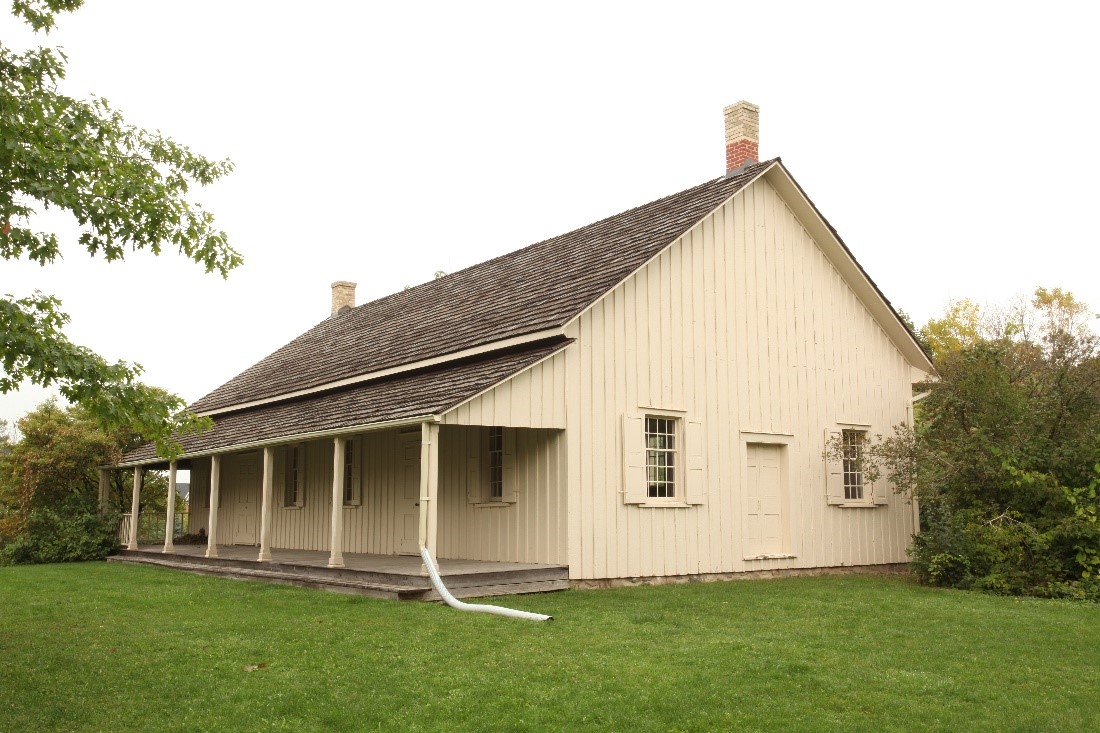
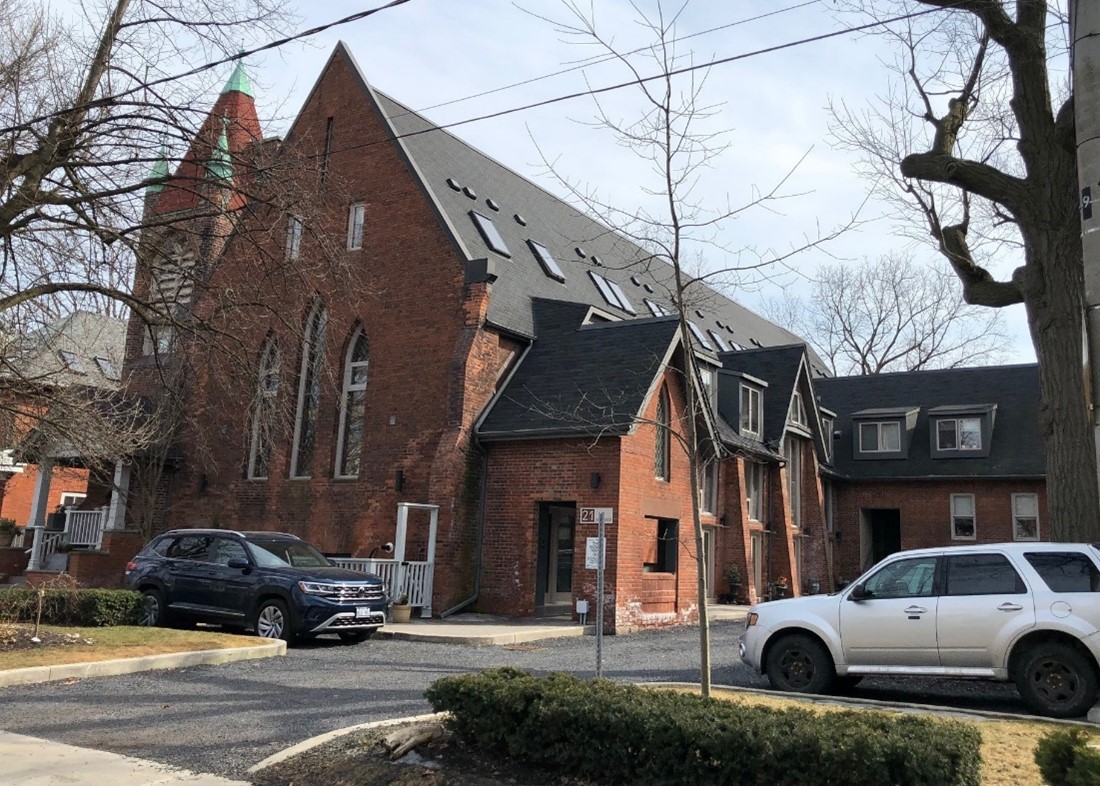
Designated by the City of Toronto in 2007 under Part IV of the Ontario Heritage Act.
Description of Property — Toronto, 21 Swanwick Avenue
The property at 21 Swanwick Avenue is worthy of designation under Part IV of the Ontario Heritage Act, and meets the criteria for municipal designation prescribed by the Province of Ontario under the categories of design, historical and contextual value.
Located on the south side of Swanwick Avenue, west of Main Street and opposite the entrance to Enderby Road, Emmanuel Presbyterian Church (1893) is documented in J. R. Robertson’s Landmarks of Toronto (Vol. 4, 1904, pages 304-306). The property was listed on the City of Toronto Inventory of Heritage Properties in 1984.
Statement of cultural heritage value
Physical or design value
Emmanuel Presbyterian Church is a representative example of a religious building with Gothic Revival styling. Inspired by English medieval prototypes, Gothic Revival designs are recognized by the application of pointed-arches, buttresses, and varied window types. Emmanuel Presbyterian Church is a modest rendition of the style, with attention focused on the treatment of the corner tower.
Historical or associative value
Emmanuel Presbyterian Church is an institution that contributed to the historical evolution of the East Toronto community. The development of the site dates to 1888 when a small building was constructed following the merger of two Presbyterian congregations as Emmanuel Presbyterian Church.
The present church was completed in 1893 under the direction of contractors McMillan and Costain. Alterations in 1901 and 1914 included an entrance porch and a large wing (for a church hall and Sunday School). With changes in local demographics, in 1973 Emmanuel Presbyterian Church joined with St. James Presbyterian and St. Matthew’s Presbyterian (both established in 1925) to create the Tri-Congregations, a three-point charge served by a team ministry. In 1988, the latter congregations amalgamated as Faith Presbyterian Community Church, now located in East York.
Contextual value
Emmanuel Presbyterian Church is a local landmark that is carefully positioned to terminate the view at the south end of Enderby Road. The church contributes to the character of East Toronto, which was incorporated as a Village in 1888 and a Town in 1903.
The residential community grew up around the intersection of Main Street and Gerrard Street East, providing housing for workers at the Grand Trunk Railway yards at the northeast end of the municipality. Among the institutional, religious, and educational buildings that became important neighbourhood markers, Fire Hall No. 22 and Police Station No. 10 at 85 and 97 Main Street were completed after the City of Toronto annexed East Toronto in 1910. Located one block east of Emmanuel Presbyterian Church, the latter properties are recognized on the City’s heritage inventory.
Heritage attributes
The heritage attributes of Emmanuel Presbyterian Church related to its design value as a representative example of Gothic Revival styling are found on the exterior walls and roof, consisting of:
- the plan, with the main body of the church rising one extended storey under a steeply pitched gable roof with the gable end facing Swanwick Avenue
- the application of red brick cladding, with brick, stone, wood and metal trim
- the square tower, anchoring the northeast corner, with an entrance and pointed-arched window opening at the base, pointed-arched openings with louvres and tracery, and a pyramidal roof with tourelles, and copper trim
- the open porch, protecting the main entrance, with detailing reflecting the early 20th century Arts and Crafts movement
- on the main body, the principal (north) façade with a trio of pointed-arch window openings and a narrow lancet window beneath the apex of the gable
- on the side elevations of the main body (east and west), the battered buttresses, gabled wall dormers, segmental-arched window openings with brick flat arches and stone sills and, on the west wall, the enclosed entrance porch with pointed-arched window openings (one of the window openings on the east wall has been bricked in)
- the complementary addition at the southwest end of the church, with brick cladding, gable roof with a gabled dormer on the north slope, and flat-headed door and window openings with brick and stone trim
The rear (south) wall of the church has no distinguishing features and is not included in the cultural heritage value of the property.
2.5. Designation of heritage conservation districts
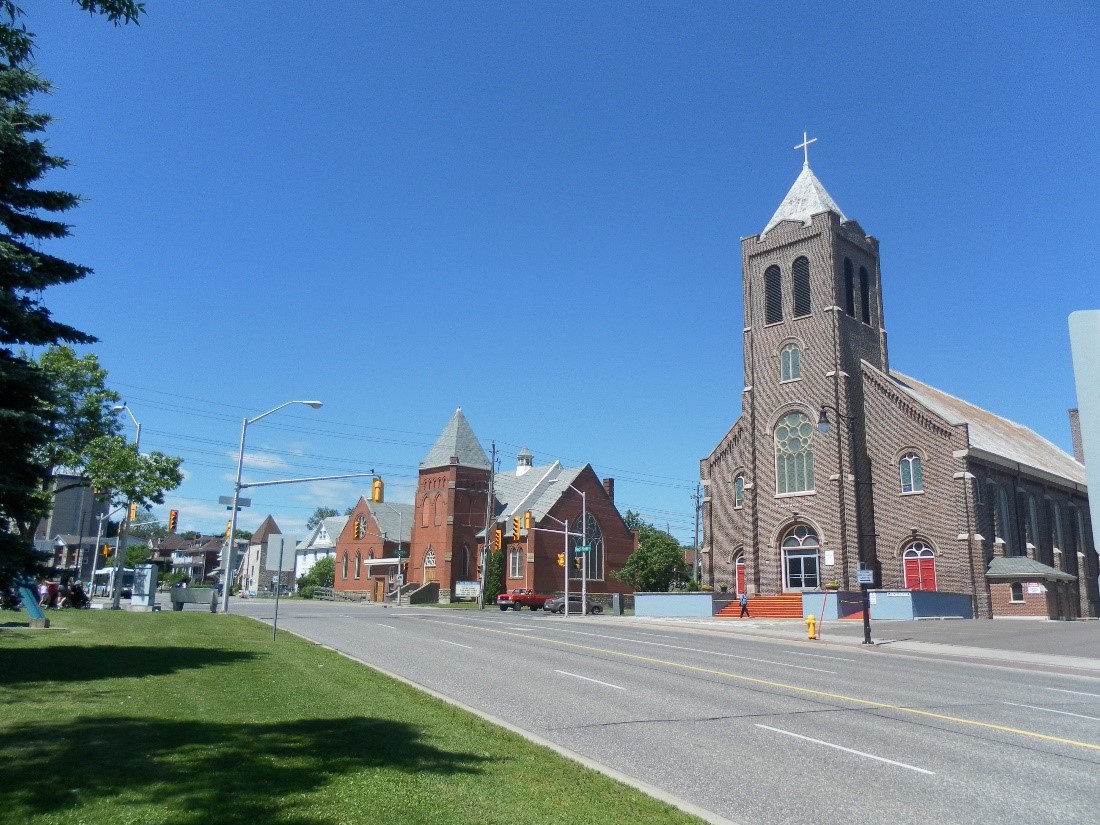
Part V of the Ontario Heritage Act provides for the designation of heritage conservation districts — areas whose cultural heritage value contributes to a sense of place extending beyond their individual buildings, structures and landscapes. An HCD may comprise an area with a group or complex of buildings, or a larger area with many buildings and properties.
Properties protected within a heritage conservation district are noted for their contribution to the character of the area. Context is often important for places of worship, which tend to have large and prominent buildings and features that are familiar community landmarks. Heritage places of worship can be significant not only for their buildings, but also for cultural heritage landscape features such as landscaping, cemetery or burial ground, viewsheds and corridors, as well as archaeological resources and historical associations.
District designation enables the municipality to manage and guide future change in the district, through a district plan with policies and guidelines for conservation, protection and enhancement of the area’s special character. Municipalities must consult with their municipal heritage committee, where established, and the public in the development of the plan.
The municipal clerk is required to keep a current register of all heritage conservation districts (as well as individual designated and listed properties) situated in the municipality.
Following approval of a local designation bylaw for a heritage conservation district, any exterior alterations, additions and demolition to property within a heritage conservation district requires a permit from the municipality. Decisions on whether to issue a permit generally depend on the approved guidelines and plan for the district. Interiors of buildings are not included in a district plan.
It is possible for a heritage place of worship to be designated under Part IV of the Act in addition to being included in a heritage conservation district. This provides for a higher level of protection of both exterior and interior heritage attributes that may otherwise not be covered in a heritage conservation district plan.
For more detailed information about heritage conservation districts, see the Heritage Conservation Districts guide in the Ontario Heritage Tool Kit.
2.6. Heritage conservation easements
Heritage conservation easements are highly flexible conservation tools. An easement is a voluntary legal agreement entered into by a property owner to protect the heritage character of a property. The terms of the easement are registered on title with the land and apply to all subsequent owners of the property. Easements do not usually prohibit change or limit use. Instead, they ensure that change is managed in a manner consistent with sound conservation principles and that heritage character is conserved and maintained. The level of control is determined by the easement terms and conditions.
The Ontario Heritage Act empowers the Ontario Heritage Trust to enter into heritage conservation easement agreements with property owners. The Act also provides for municipal councils to pass bylaws allowing them to enter into easement agreements for the conservation of property of cultural heritage value or interest.
Easements may be used to protect exterior and interior features, as well as landscape features. Because each property has its own unique cultural heritage value and heritage attributes, an easement agreement may be tailored to the specific circumstances of a place of worship. The Trust or the municipality works in partnership with the property owner to develop the terms and content of each agreement.
Details about the Trust’s Conservation Easement Program can be found at the Trust’s website.
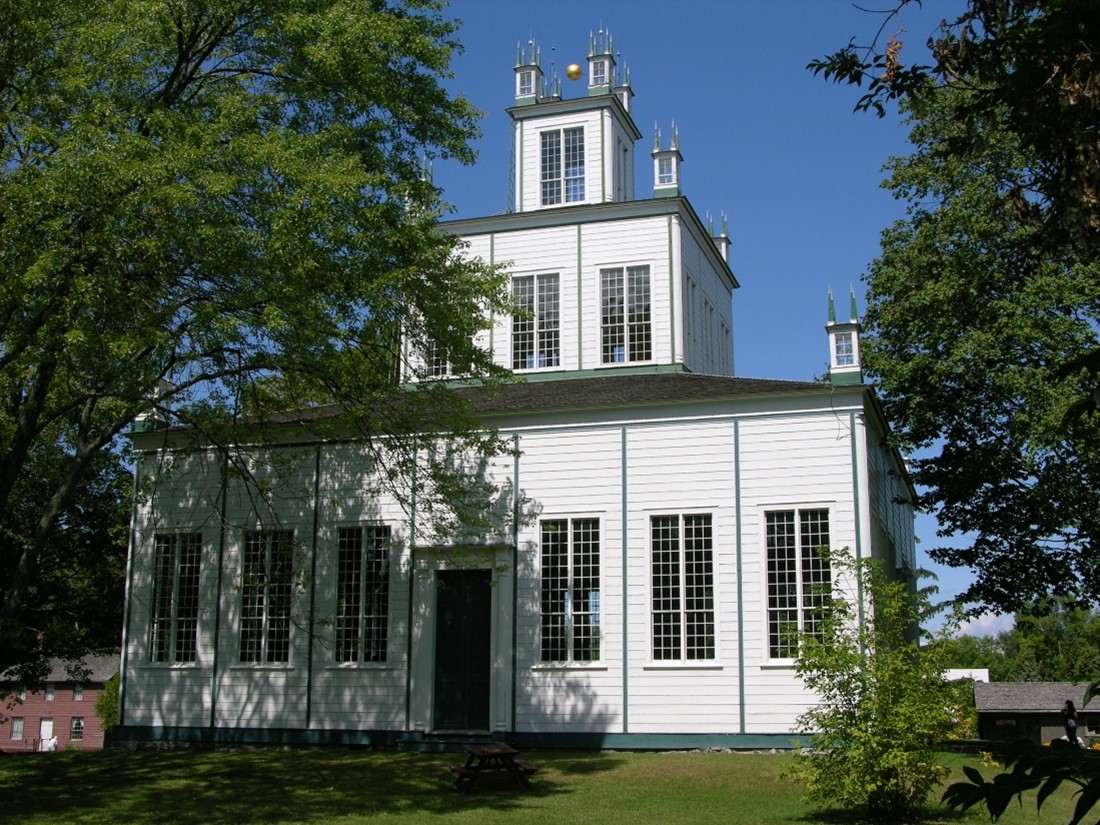
Case study 2: Sandwich First Baptist Church, Windsor

Community Recognition of a Heritage Place of Worship
Designated in 1995 under the Ontario Heritage Act
Located in the historic Town of Sandwich, the Sandwich First Baptist Church is one of the oldest active Black churches in Canada. The church was designated under the Ontario Heritage Act for its important historic connections to the anti-slavery movement and the Underground Railroad. It was also recognized with a provincial plaque in 1997 and was designated a National Historic Site in 2000.
As a border town near a river crossing, Sandwich was a popular destination for enslaved people seeking freedom in Canada. The Sandwich First Baptist congregation was established in 1840 in a log church located on or near the current site. The congregation played a key role in the Underground Railroad by sheltering and assisting many of the new arrivals. The church was a founding partner of the Amherstburg Regular Missionary Baptist Association, an organization formed in 1841 to assist in the formation of Black Baptist congregations in Canada. The organization consists of nine cross-border partner churches and remains active today.
In 1847, Queen Victoria granted the congregation land for construction of a church and cemetery. The modest church seen today was constructed from handmade bricks fashioned from clay found on the banks of the Detroit River by members of the congregation. As completed in 1851, the church’s original design was plain and simple, with a wooden gabled entrance porch. Gothic windows were added in the 1880s and a two-storey tower replaced the wooden porch in 1920.
Sandwich First Baptist Church is part of Parks Canada’s National Historic Sites commemorating the Underground Railroad. Through interpretive and educational events such as concerts, plays, tours and Doors Open activities the small congregation promotes awareness of the history of the Black community in Windsor. The tours are very popular, drawing visitors from all over the world. The congregation also provides educational programs for local school groups, has partnered on provincial and federal government initiatives to promote Black History and is actively building an artifact collection documenting the history of the community.
As a designated property in Windsor, the church is eligible for funding from Windsor’s Community Heritage Fund. In 2010, it received a grant of $47,000 to restore the roof and front door. The congregation worked with the municipal heritage committee and the municipal heritage planner, as well as a local engineer, to ensure that restoration work was sympathetic to the cultural heritage value of the historic church. With limited resources, the congregation has been able to successfully commemorate and conserve this important symbol of Black History in Canada.
Points to note
- A history of multiple partnerships builds strong community roots and broad recognition.
- Recognition by multiple levels of government builds community pride and awareness.
- Community support and recognition is demonstrated by municipal designation and grants to help keep the heritage place of worship viable.